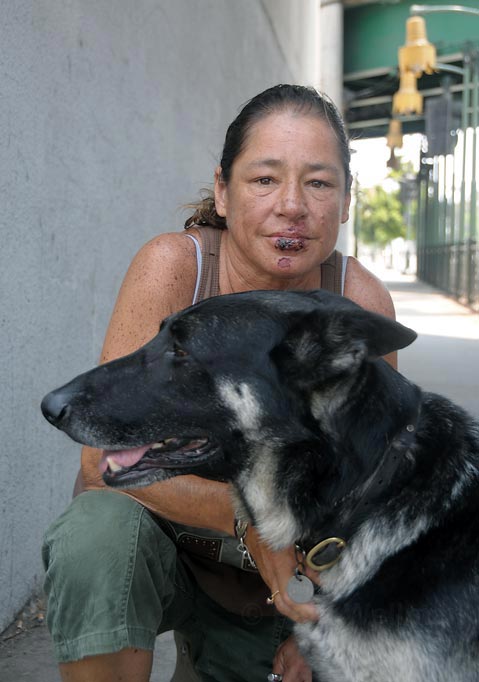Slipping Through the Cracks
Health Workers Say Better Agency Coordination Needed to Help Homeless
Jerry Montgomery, a man in his fifties, died mid-July in the care of Sarah House, a small hospice residence for low-income individuals. A veteran of the U.S. Army who liked to write, Montgomery had been homeless, living on the street with multiple types of cancer, and his sister and parents had passed away years ago. It was his deteriorating health, combined with a bad construction market, that put Montgomery on the streets in the first place. “He was a really brave guy,” said Sarah House Executive Director Debbie McQuade, who recalled that Montgomery carried around an autobiography of Walter Cronkite, as well as a novel he himself had written.
Sadly, Montgomery fits right in with the demographics of people struggling to survive on the streets of Santa Barbara. In a report to the County Board of Supervisors Tuesday, the Homeless Death Review Team — formed in recent years and made up of members from various county departments, as well as private community caregivers — reported that out of 45 homeless deaths in the county from January 2009 through March 2010, 87 percent of the decedents were men, 83 percent were Caucasian, 53 percent died between the ages of 50 and 59, and 13 percent were veterans.

The detailed 41-page report had boatloads of information and analysis, but more problems were posed than solutions, especially given that this study is the first to emerge from the work the team has been doing. Perhaps looming largest on the list was a lack of collaboration and communication between county agencies when it came to treating the homeless population, leading to misreporting, people falling through cracks, and a duplication of resources used. The lack of communication among the Public Health Department, Department of Social Services, and Alcohol, Drug and Mental Health Services could’ve also led to redundant medications being prescribed. The obvious flaws led members of the Board of Supervisors to urge county staff to adopt “some sort of system that works better,” as 1st District Supervisor Salud Carbajal said. “This is a no-brainer. We should be able to just get together and solve it.”
And that’s exactly what officials plan to do as they move forward. In fact, according to Dr. David Lennon in the Public Health Department, collaborative efforts among the three departments are already underway, given the results of the study. “My big goal is to enhance coordination,” Lennon said.
While each decedent was suffering from an average of eight conditions while on the streets, drug- and alcohol-related deaths were the most prevalent cause of death “by far,” according to Lennon. And looming large over the group was mental illness. Half of the people who died in the 15-month period suffered from mental illness. But even then, health-care providers are hindered by a variety of issues: Many times patients refuse to get help for drug, alcohol, or mental health problems, and oftentimes the money just isn’t there to provide the contacts, follow-up, and treatment needed to reach the estimated 6,000-plus homeless people in Santa Barbara County. Continuity of care was an issue. While some had accessed county services, the average length of time between a person’s last visit and death was nearly a year. “We’re all challenged by limited resources,” Lennon said. “We’re all trying to do more with less.”
While not perfect — much of the data when dealing with homeless populations is hard to come by, inconsistent, or logged incorrectly
— the report contains critical information of an astounding depth and thoroughness, which should help officials go forward in answering difficult questions about the homeless population. Armed with this info, according to Casa Esperanza Executive Director Mike Foley, the county needs to start combatting the numbers with real change. Housing for the homeless, a services coordinator, and street outreach workers are what’s needed, Foley said, but all those resources take money, and some of them have been cut recently in the fiscal mess of the last few years.
But most agree, when talking about helping the homeless population, that perhaps above all is the need to “remember that they, too, are human beings,” said Dr. Takashi Wada. In Montgomery’s case, many who knew him had hoped he would have a chance to experience the community Sarah House offers before his death, which doctors estimated was still several months away when he entered hospice care. But, physically, he was too run down. “He was a really, really nice guy,” said social worker Ken Williams. “I hope the community can start seeing these people as our neighbors who are sick.”



